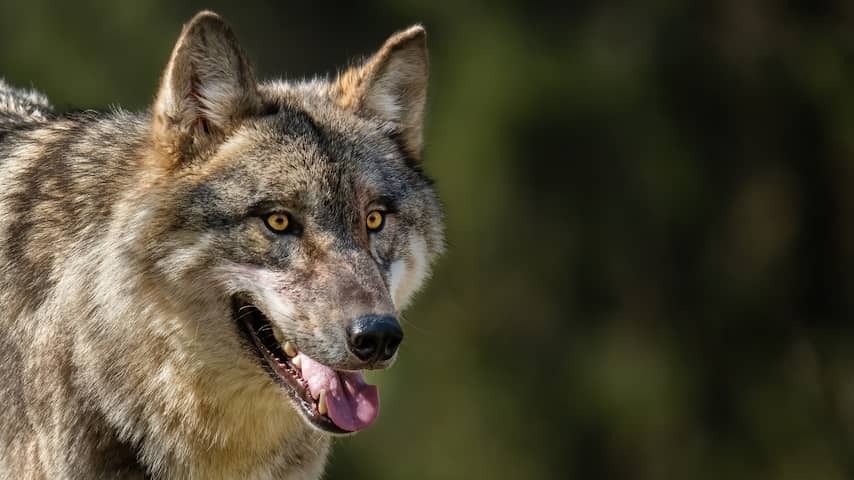
After a recent biting incident possibly involving a wolf, wolf experts expressed their concerns to NU.nl about the predator on the Utrechtse Heuvelrug. They observe that this wolf is becoming increasingly less afraid of humans and hope the animal will soon be shot.
A wolf on the Utrechtse Heuvelrug has been involved in incidents for two years. Initially, the animal was only interested in dogs, but over time, that has worsened.
The wolf has now bitten a human several times. Last year a child, in May of this year a woman, and on Wednesday morning a six-year-old boy.
The province of Utrecht has already issued a permit to kill the wolf. Last week, the judge approved it. But no shots have been fired yet.
Wolf expert Glenn Lelieveld is surprised by the course of events. “I find it more than concerning. This goes much further than exploratory behavior. This is heading towards predatory (hunting, ed.) behavior. The story goes that the wolf wanted to drag the child into the cover of the bushes. That is purely predatory behavior.”
‘Not plausible that this is a different wolf’
Wolf expert Dick Klees does not want to go that far yet. “A wolf is very efficient at biting to death. This is not. What it is then, is very difficult to say. But this is escalating. You don’t want to let this run its course.”
DNA research still needs to prove that it was indeed a wolf that bit the boy on Wednesday. But those involved have no doubt about it.
If it was indeed a wolf, then experts are almost certain that it is the wolf that has been involved in incidents for two years. That wolf may therefore be killed.
“It is not plausible that another wolf would simply start engaging in this kind of activity,” says Klees. According to him, a wolf has to cross a threshold before it comes close to people. That threshold must wear away, as it were. That can happen if a wolf repeatedly has no negative experience with humans.
According to Klees, that pattern is clearly visible with the biting wolf on the Utrechtse Heuvelrug. “First he ignored people, then he showed interest in dogs. And now there have been several confrontations with people.”
‘We warned about this’
Experts have advised intervention several times. Last year, the province wanted to sedate and tag the wolf. Animal organizations opposed this and the judge agreed. Now that the situation threatens to escalate, the wolf may be killed. Also from the judge.
Lelieveld is “completely done” with the “naive attitude” of the policymakers. “We warned about this when this wolf did not seem afraid of people. If it gets out of hand further, then it will happen. It is seriously unsafe.”
When asked if he is afraid that this wolf will eventually kill a human, Lelieveld answers: “If I look at it very coldly, then that is a logical consequence of the pattern you see. That can happen today or tomorrow.”
In other countries, they kill such a wolf much faster
Ecologist Erwin van Maanen is also now taking into account a “serious incident.” He advised the province of Utrecht to shoot the wolf dead. “Not an easy or frivolous conclusion,” he says.
Van Maanen calls the wolf “admirable and ecologically indispensable.” But he also points out that “we must recognize that there are historical and current situations in which conflicts with humans arise.”
According to Lelieveld, people from abroad are watching with “increasing amazement” at how the Netherlands deals with problem wolves. “Eastern European colleagues told me that they don’t even apply for a permit. The wolf is suddenly gone. Close off the area and make it a manhunt. Then it’s over within a week.”
Not all wolves are dangerous
Lelieveld and Klees also see that the incidents in Utrecht have consequences for the support for the wolf in the Netherlands. At the same time, of the more than one hundred wolves in our country, only two (also one on De Hoge Veluwe) cause problems, not counting attacks on livestock.
“No, not all wolves are dangerous,” Lelieveld emphasizes. “But just like dogs, wolves have different characters. This wolf is cheeky and is not corrected. That is due to our mutual bickering.”